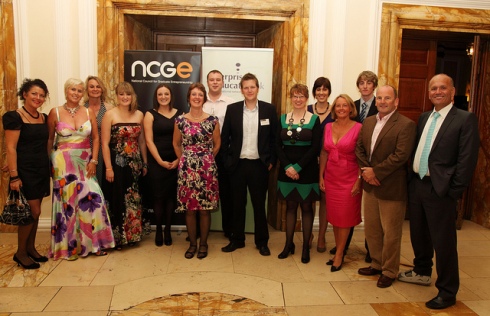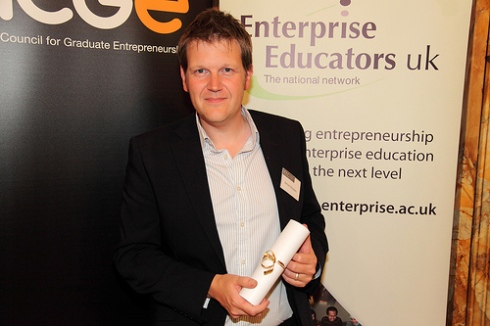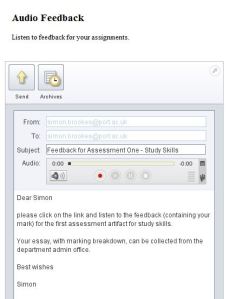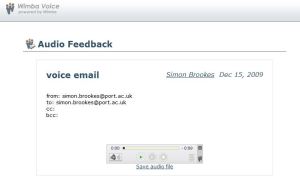This article was originally submitted as a poster presentation at the International Entrepreneurship Educators Conference, Edinburgh, 2009. I was pleased to win the poster prize for this contribution.
You can download a printable pdf of the original poster here: IEEC 2009 Poster.
Summary
Entrepreneurial learning is enhanced when learners:
- are immersed in authentic or near-real experiences (transformed into knowledge and understanding-1)
- are able to reflect on these experiences
- are able to synthesise key concepts by construction of links between theory and practice (a deep approach to learning-2)
- are motivated and engaged
- are allowed to imitate, experiment (play) in a safe (low-risk) environment
Simulations, case-studies, role-plays and, more recently, computer-based simulations (hereafter collectively referred to as “simulation(s)”) are the commonly used experiential teaching “tools” employed to approximate realistic experiences.
Although becoming more sophisticated these interventions are generally unconvincing proxies for real life experiences often requiring a large leap of imagination on the part of the participating students.
The best experiential teaching techniques shrink the “reality gap” (figure 1) that exists between classroom “simulation” and authentic life experience (the wider the gap – the harder the participant has to work to suspend their disbelief).
A functional hallmark of Alternate Reality Game (ARG) design is the use of immersive techniques to blur the boundary between what is story and what is reality (ARGs are often referred to as immersive games).
These same techniques (see “2. What is an ARG?”) are to be employed in a taught enterprise unit in an attempt to create what might be termed a hyperreal simulation or hyperreality – an experience that will produce a sense of realism far in excess of that of traditional “simulations”
A well designed ARG based unit also provides the opportunity to enhance student motivation and engagement through the use of techniques employed by traditional game designers (competition, reward etc).
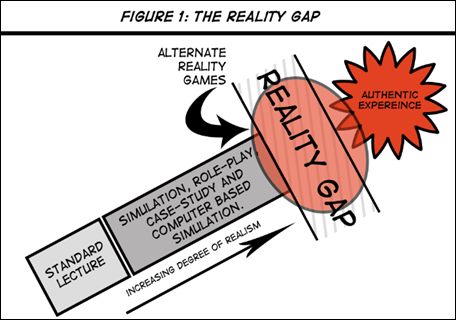
What is an Alternate Reality Game (ARG)?
“Alternate Reality Games take the substance of everyday life and weave it into narratives that layer additional meaning, depth, and interaction upon the real world.”3
Alternate Reality Games (ARG’s) tell rich, interactive stories through narrative elements that are distributed across various platforms.
Pieces of the story are distributed online or off across multiple mediums. These may include websites, blog posts, email, video clips (maybe on youtube, television or cinema), audio clips (podcasts, voicemail messages, radio broadcasts), print ads in magazines and newspapers, billboards, posters in shops, payphones (cards or real-time calls), people with placards on streets and packages sent through the post.
The stories are carefully concealed from players until appropriate moments determined by the game designer(s) or ‘puppetmasters’.
Game play involves players working collaboratively (often globally) using email, phone/sms contact, real-time interactions and extensive online engagement to solve problems (puzzles) revealed through the narrative.
Players of ARG’s often develop strong emotional connections with the story characters who are designed to appear as real people. Devices such as real-time communication with the players (using blogs, social networks, video, VOIP, sms, telephone, online chat etc) and development of realistic, rich character histories make this possible (Figure 2).
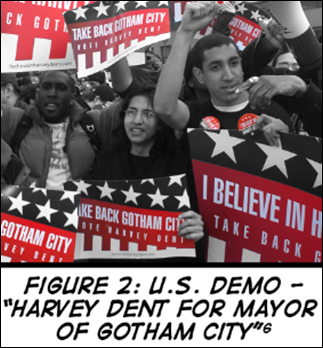
Instead of requiring the player to enter a fictional game world, ARG designers attempt to enmesh the game within the fabric of the player’s real world by harnessing as many media technologies and interfaces as possible. By doing so, ARG’s expand the frame for the game beyond the computer monitor or television screen, effectively making the entire world the “game board.” (above modified after 4).
ARG players report unprecedented levels of immersion in the presented narratives as well as high levels of engagement.
Why ARGs for Enterprise Education? (after 5)
Realistic, interactive narrative (characters/story)
- Not just a “normal” simulation / roleplay. Extends the simulation
- paradigm towards authentic experience
- Contextualised – the narrative can be modified to fit ANY real-life
- situation
- Experiential – application of theory in a low-threat, realistic
- environment
Self directed play – influence on outcomes
- Ownership / responsibility for learning
- Enquiry/research based
- Facilitates critical (deep) academic thinking
- Motivating
Progress and rewards (leaderboard and prizes)
- Provides incentive, motivation, competition, sense of achievement, fun!(feedback/reflection)
- Regular delivery of new problems/events
- Key to maintaining engagement/interest
- Large, active communities
- All the benefits of learning in groups (collaborative, self-supportive, peer feedback, vicarious learning)
- Development of teamworking skills
Novel method of delivery
- Engagement, Fun, Motivation
Utilises Existing technologies
- Removes barriers = Buy-in
- Promotes engagement
The Unit: Enterprise in Context (Level One, 10 Credits, One Semester)
The Scenario
Students will be participating in an Undergraduate Training Programme (UTP) run, in collaboration with Portsmouth Centre for Enterprise, by a company who specialise in turning around failing businesses. The company is called Phoenix UK Ltd.
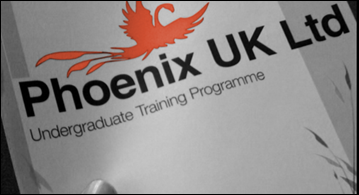
Phoenix UK Ltd has directors, employees, a history, a web presence, email addresses, Skype and Twitter accounts. The managing director is a character called Simon Brookes!! Simon will be running the UTP.
Phoenix UK Ltd are based in the City of Porthampton which has a council (www.porthamptoncc.org.uk), a newspaper – The Porthampton Bugle
(www.porthamptonbugle.co.uk) and a football team (non-league!).
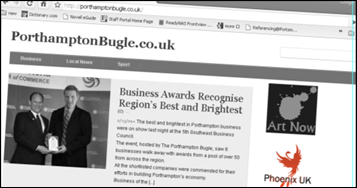
In small groups the students will be working with a “real” business that is suffering financially. Their task is to turnaround the fortunes of this failing business.
The failing company, Salter & Son, is a rather old-fashioned, high street, gentlemen’s outfitter whose “brand” and product range leave much to be desired!
(www.salter&son.co.uk)
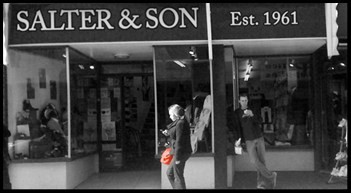
Salter & Son, also based in Porthampton, has a new Managing Director (Craig Salter) and several key staff who deal with different areas of the business; Christine Parker – Marketing; Barry Scott – Finance.
 The scene is set!
The scene is set!
Delivery
Mostly self-directed (or guided self-research), usually in response to triggers from Salter & Son employees.
The students will need to communicate and work closely with each of Salter & Son’s key personnel in order to get the information they need to make their final recommendations.
Communication will be through email, conference calls, online chat, video and traditional mail (Students will receive packages through the post sent from Salter&Son Employees).
As the unit progresses the students will learn about the basics of marketing (retail slant), business finance, business management and personnel issues (the unit learning outcomes).
Several workshops or master-classes will supplement the students own research, delivered by “external consultants” (in reality academics role-playing consultants).
Students will need to keep on their toes and be ready to respond to the clients requests, moods and whims. There will be some surprises!
Assessment
Assessment one – small group presentation to the client (in this case Craig Salter) on the findings of a “best practice” fieldtrip the students will have undertaken in a local high street (students also have an opportunity to spend some time interviewing the owners of several local clothes retailers).
Assessment two – individual short answer tests. At five points throughout the unit each student will receive an email from a Salter & Son employee which will contain questions pertaining to that employees area of responsibility (marketing, finance etc). The answers emailed back to the client will be assessed. These marks also contribute towards the Phoenix UK Leaderboard™ score (see “The Leaderboard”).
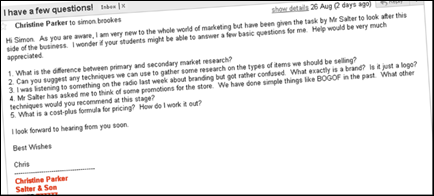
Assessment three is designed to encourage the students to reflect on their performance as a member of a team. Every fortnight the students will self- and peer-assess each other’s teamwork performance against a number of pre-selected criteria. An individual 500 word essay reflecting on their overall performance will be assessed. The total mark at each assessment also contributes towards the Phoenix UK Leaderboard™ score (see The Leaderboard).
Assessment four is a group submitted, 2000 word report, written for the benefit of the failing company, Salter & Son. This report will include all of the students’ recommendations (marketing, financial, personnel etc.).
The Leaderboard
A bespoke, online leaderboard has been developed for this unit.
Throughout the duration of the unit students are given marks for various tasks completed (answers submitted to client’s questions and also for teamwork contribution).
These marks convert to scores which will be added to the Phoenix UK leaderboard.
Students will be able to view their scores and those of their colleagues online, throughout the programme.
At the end, prizes will be awarded to the highest scoring individual and also the highest scoring team.
The leaderboard was included as a way of introducing an element of competition (this is a game!) and fun to the unit.
References
1. Stokes, D. (2009, March 26). Action learning tools for building self-efficacy and entrepreneurial skills. Paper presented at Essential Tools for Entrepreneurship Education, University of Reading. Retrieved August 25, 2009, http://www.heeg.org.uk/Heeg/e1e2_event_details.aspx?eventDateId=2008121515135305817561&websiteId=0&previousPage=e1_Event_List.aspx?websiteId=0&step=detail.
2. Biggs, J. (1999) What the Student Does: teaching for Enhanced Learning. Higher Education Research & Development, Vol. 18: 1, 57-75.).
3. Martin, A., Thompson, B. & Chatfield, T. (2006). Alternate Reality Games White Paper – IGDA ARG SIG. Retrieved August 26, 2009 from http://www.igda.org/arg/resources/IGDA-AlternateRealityGames-Whitepaper-2006.pdf.
4. What is an ARG? (2008). Retrieved August 26, 2009, from the Argology.org website: http://www.argology.org/_what-is-an-arg/
5. Mosely, A. (2008). An Alternative Reality for Higher Education? Lessons to be learned from online reality games. Retrieved January 28, 2009, http://moerg.files.wordpress.com/2008/10/moseley2008a.pdf
6. Harvey dent demo photo. Retrieved august 29 2009 from http://www.flickr.com/photos/thestacester/2352683541/sizes/l/
7. Phillips, Andrea. “Deep Water.” (July 26, 2001) http://cloudmakers.org/editorials/aphillips726.shtml Access: May 6, 2002.

